How to quilt feathers – 2 methods
Editor’s note: Today’s post on feathers was written by guest blogger Valerie Smith. Valerie is a published quilting artist based in northeast Ohio. She’s been quilting for more than a decade and shares her stories and experiences on her blog Pumpkin Patch Quilter. Thank you, Valerie, for sharing your feather knowledge with our readers!
When delving into the world of custom quilting there is one design element that virtually all quilters want to learn to create – feathers! Feathers can take a simple quilt and send it soaring over the top with texture and visual interest. The best part is, with a little practice anyone can create beautiful flowing feathers.
I think it is fair to say that feathers are my favorite thing to quilt. But before I ever touched the longarm machine I spent some time with pencil and paper. I practiced several different techniques for drawing feathers, the key being that as I drew them I did not lift my pencil from the paper. You can practice feathers using pencil and paper, a dry erase board and erasable marker, or even on a graphic design tablet like I use to create my quilting design plans. Once you feel comfortable drawing feathers by hand you are ready to move on to creating them on the longarm.
I have found that there are two common methods of creating feathers. Neither is right or wrong, but often one method seems to feel more comfortable to some people than the other. I would recommend at least trying both methods a few times and then choosing the one that feels right to you.
Method #1
The first method is one in which each feather plume is created individually. For this feather you are going to draw your spine with a water soluble or disappearing ink pen. Begin at the base of the feather spine, creating individual feather plumes trailing up the right side of the spine. The bulk of your back tracking will be over the length of the plume as you come back up the plume you just created to make the next.
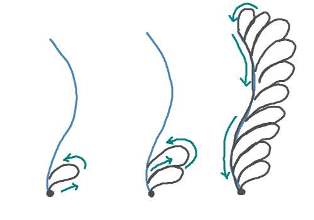
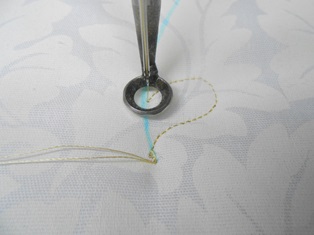
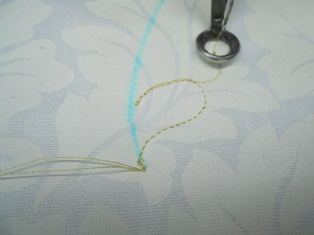
When you reach the top of the marked spine, follow the line you drew in with stitching all the way back down to the base to create your stitched feather spine. By drawing in our line with a removable ink before stitching, we avoid backtracking over the spine and create minimal thread buildup. Just as you did the right side, trail again up the left side of the spine creating plumes in the same manner. When you reach the top be sure to put one joining plume in the center to close the feather.
It’s also possible to start at the top of your feather with this method and then add plumes all the way down to the base of the feather. Experiment to see if climbing up the feather vein or sliding down the feather gives you better results.
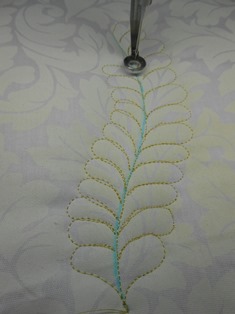
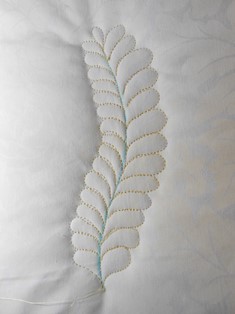
Voila! You have created a beautiful traditional feather!
Method #2
The next method for feathers is the one I personally prefer. It is often referred to as the “bump-bump” method.
For this version you will again draw your spine first using water soluble or disappearing ink to plan ahead the placement of the spine. Start at the base and create a plume. When you reach the base of that plume, instead of backtracking over the length of the plume, push your stitching outward away from the first plume and go on to create another. Next you will backtrack over the hump or “bump” of that plume and then “bump” a second time to create the next plume.
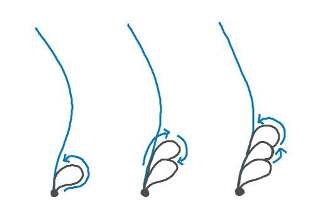

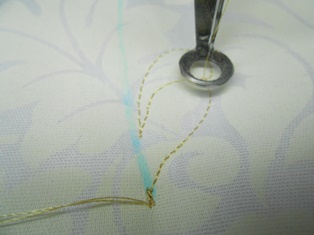
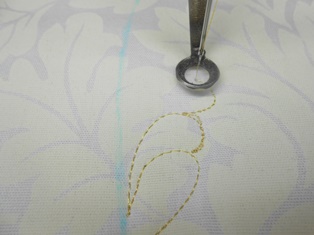
By “bumping” over every other plume we are again eliminating backtracking that can cause thread build up. Here I have demonstrated using a contrasting thread, but by using a blending thread you will create texture and hide backtracking.
Once you reach the top of the spine you will again create your stitched spine by trailing back down the line you marked ahead of time in water soluble or disappearing ink. Reach the bottom of the spine and trail back up the left side of the spine in the same manner as you did the right, creating plumes and again being sure to place one or two small feathers at the top to close the feather.
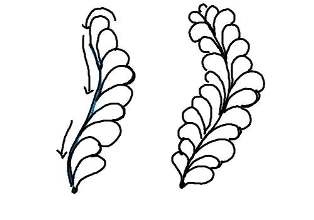
Spend some time mastering one or both of these methods for creating feathers and you will be on your way to creating multitudes of heirloom quilting designs in no time!

Valerie Smith is a published quilting artist based out of northeast Ohio. Quilting over a decade and sewing most of her life, she made the decision to purchase an APQS longarm quilting machine. She has since built a successful business focused on hand guided custom machine quilting. You can find her blog – Pumpkin Patch Quilter – at www.pumkinpatchquilter.com.



